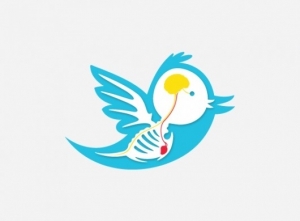Using Twitter as an individual is very different from using it as a means to promote your business. A presence on the site is essential, but it’s also important to ensure you’re doing everything you can to make sure your business maintains the most positive and professional image you can create. By now, most people who own a smartphone or a laptop understand the basics of twitter but not everybody appreciates the significance of maintaining a well-managed business account. This is our guide on how to make Twitter work for you.
Never post anything personal
Though it may seem obvious, for people with multiple Twitter accounts, accidentally posting something on the wrong timeline can be a common mistake. Responding to a friend about your weekend plans or worse still, unwittingly sharing a negative or inappropriate tweet can spell disaster for your business’ credibility. Always ensure that your business twitter account is checked carefully for accidental tweets or mistakes. All it takes is one well-placed retweet to send this information out to potentially thousands of people. A full-time social media operative or diligent, daily checking can help you to avoid any unwanted to attention. Even if your business is very small or you’re a sole trader, always use a specific account for your personal activity online and keep it totally separate from your business profile.
Share content, not opinions
When individuals use social media for personal reasons, strong and even potentially controversial opinions can be commonplace. As Twitter is a platform that encourages debate, this can be a positive thing in some cases, however, its rarely a good idea to enter inter a heated discussion using a business account. Instead, try to focus on sharing existing content that encapsulates your core beliefs and business ideals. Blog posts, videos and quick, interactive content such as polls or surveys will generally garner a more positive response than a sweeping statement or empty post about something in the news. Remember that retweets take milliseconds, so if you do share content that people are interested in, the chances are they will help to spread this around for you. Though a pithy response or a witty post might make you smile, its unlikely to have the same potential in terms of both reach and engagement.
We have discussed the importance of having a clear brand voice before and this is definitely important when using Twitter. Replies, posts and any images or videos you share need to be vetted before they’re published to ensure they convey exactly what you want to say. Even seemingly insignificant tweets can be important and a reply that looks unprofessional only needs to be seen by a few customers before it starts to do damage to your reputation. Keep twitter conversations, short, friendly and specific if you can. Any complex questions or potentially difficult interactions should generally be addressed by offering the customer an email address or contact number where they can go into more detail.
Do Not Feed the Trolls
This is one of the golden rules of social media that many businesses seem to forget. Though the vast majority of people online aren’t there to deliberately cause problems or take pleasure in creating stress for others, unfortunately, there will always be a select few who make it their business to be difficult. Troll posts can often be killed with kindness. By that, we mean that you can reply in a professional, empathetic way that shows other users you won’t be drawn into petty arguments on a public forum. In worst case scenarios, the block button is your best friend. When you’ve exhausted all of the other options and are certain that the person you are dealing with is merely trying to cause trouble for its own sake, simply remove them from your timeline. They aren’t worth the time or effort and your lack of engagement will help to send the right message to the rest of your followers. In the most extreme cases, don’t be afraid to report abusive behavior. Anything that sounds threatening, offensive or otherwise inappropriate can be reported and in most cases, the social media platform will take it seriously.
Encourage followers to interact by sharing content they can comment on but also consider other tactics, such as automated direct messages. Though too many of these can have the opposite to the desired effect, one or two brief, interesting messages that include links to new product lines, news or promotions can be a good way of targetting a large number of people. Similarly things like polls, user reviews, and video content can be a good way of generating customer to customer interaction on your timeline. Positive responses to feedback will make you look very customer focused and simple things like thanking your followers for their engagement will also show the online world that you’re not just a faceless organization. Likes and retweets take seconds but for the average Twitter user, they can provide a welcome sense of recognition, so don’t be afraid to share any positive comments if you feel they’re relevant.
Getting a retweet from an industry resource, competitor or high profile customer (such as an influencer or blogger) can cause a significant rise in both followers and interactions. Though it should be used sparingly, the practice of @ing people in similar industries is quite common and can be mutually beneficial in most cases. As well as following your customers and clients, try to keep a healthy number of industry professionals on your list, too. Retweet things that are relevant to your niche and the chances are, they will return the favor if they see something that strikes a chord with them. A simple like can often be enough to make your presence known and coupled with a mutual follow, this can be the start of a network of similar businesses or professionals who routinely help to boost each other’s web presence.







